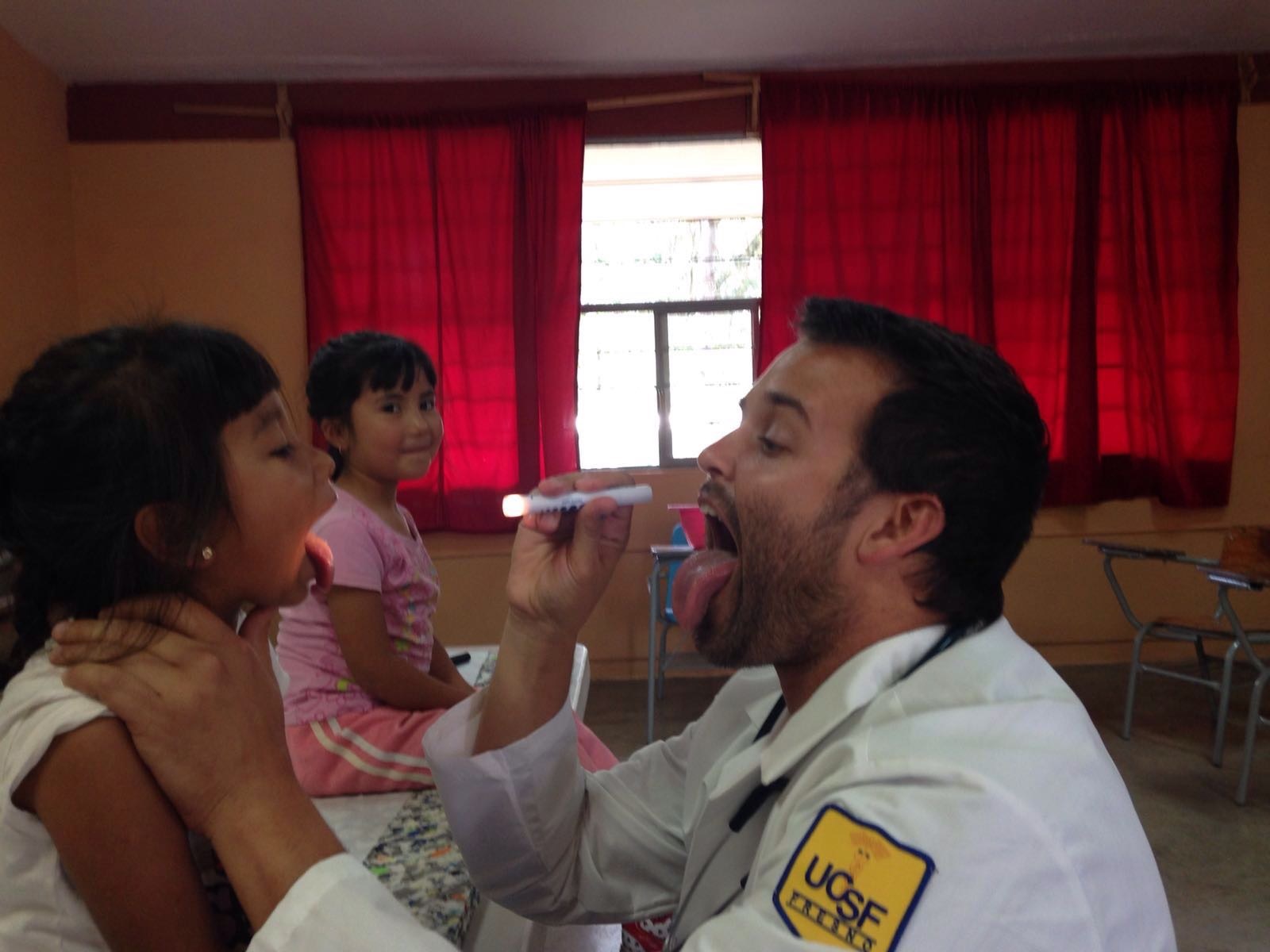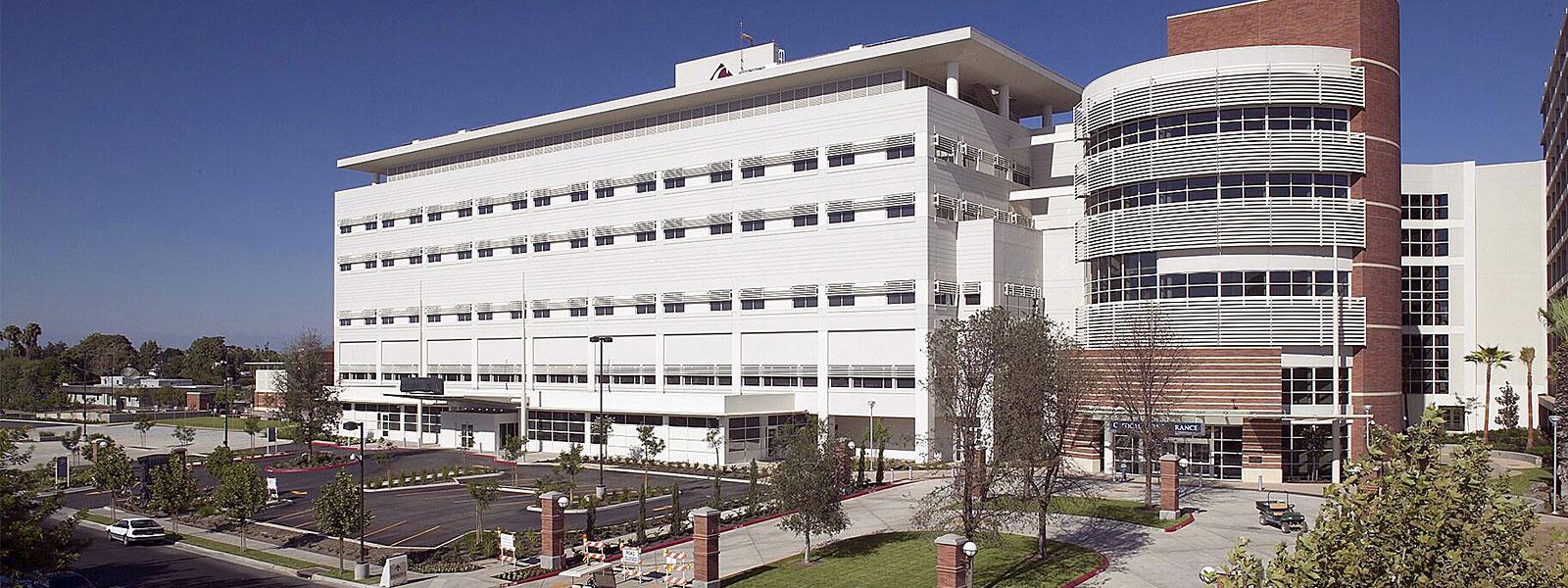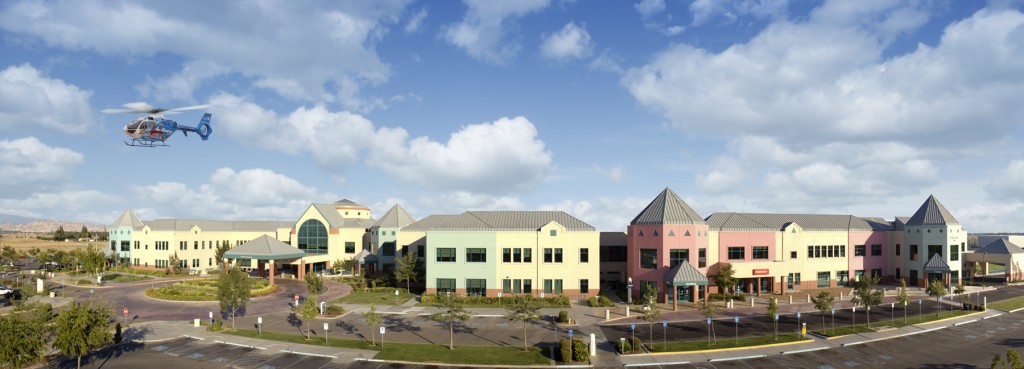Fresno is the largest city in the Central Valley area of California and Fresno County is the number one agricultural producing county in the country, employing many seasonal workers and a diverse immigrant population. Despite its growing economy, Fresno is also home to some of the highest concentrations of poverty in the U.S. In the Central Valley region, the population is rapidly growing and is also becoming increasingly Hispanic, from 48 percent in 2010 to projections of 58 percent in 2050. Due to this rapidly growing population, seasonal workers often find challenges in providing appropriate nutrition and in home pediatric care for their children.
The following interview with a pediatrician in-training opens up a window into the world of clinicians trying to care for children who come from a primarily Spanish speaking background. Dr. Daniel Ezroj discusses his experience as a 3rd year pediatric resident providing healthcare to mainly Spanish-speaking families. He identifies barriers and makes suggestions for improving the quality of care for this large and often economically vulnerable population.
 Photo Credit: Fresno – Tourism Media
Photo Credit: Fresno – Tourism Media
Can you tell me about your interest in medicine?
D.E.: I went to UC San Diego for my undergraduate studies and majored in U.S. history, thinking I was going to be a high school teacher. I got interested in medicine in my later years at UCSD after taking some courses in the sciences and having wonderful teachers who really inspired me. I wanted to obtain a skill set that would be useful no matter where I found myself in the world and that would allow me to help people. After college, I worked as an emergency medical technician and then was accepted to medical school at St. George’s University in Grenada, West Indies. I joined their global scholars program, which allowed me to also study at Northumbria University in Newcastle and then return to California for the rest of my training. When I was at UCSD, I also volunteered as an interpreter at their downtown student-run free clinic which offered primary care services to patients who were uninsured and didn’t have access to healthcare. This experience was really meaningful, and I recognized at that time that this was a population I wanted to continue to work with.
What made you choose pediatrics as your focus?
D.E.: When I looked around the hospital as a medical student, it seemed liked the pediatricians I saw were happy and enjoyed their work, and this was appealing to me when I thought about my life 10 or 20 years down the line. Also, it’s common for kids to have one or two primary problems that we can fix, and when they get better, it’s wonderful to see a sick child who doesn’t want to get out of bed turn into a kid who’s smiling and running around their hospital room.
What about your background with Spanish?
D.E.: My patients get excited when they hear that my father is from Mexico, and I think it helps bring us closer and builds trust. I always encourage my colleagues who speak a little bit of Spanish to try speaking Spanish with their patients as much as they can. If a provider walks into the exam room and they recognize that the patient’s preferred language is Spanish and they try to adapt to them as opposed to expecting the patient to speak English or becoming frustrated when the patient doesn’t, I think the patient appreciates it and enjoys having their doctor understand what they’re saying without an intermediary.
In the photo: Community Regional Medical Center – Credit: Clark Construction Group
As a pediatrician in the largest city in the Central Valley area of California, who is your patient population?
D.E.: I’m a primary care doctor for approximately 200 children ranging from newborn to 21 years old. Since I speak Spanish, many of my patients come from predominantly Spanish-speaking households. I work at a community hospital in downtown Fresno as well as a major pediatric hospital just north of Fresno in Madera, California. The children’s hospital is a large facility that brings in people from all over California because of its specialty services. If there is a child born in Bakersfield with a rare genetic condition, for example, they have the option of going 2 hours north to our facility or 2 hours south to Los Angeles because there’s nothing in between. We’re a hub for medically complex treatment. These are kids who are physiologically healthy, but have a difficult start socioeconomically.
Related article: “THE MANY SIDES OF PRIMARY CARE”
In the Central Valley area, there are many migrant farm workers and a large number of undocumented immigrants. Are they part of your patient population?
D.E.: It’s difficult to say definitively because I don’t ask patients for their documentation, but a big part of my work as a pediatrician is treating the entire family so I get a sense of what’s happening in the household. I ask questions about the home, the parents and their work. It’s not uncommon for me to treat a family and have an appointment with a 4-year-old who’s there for a well child exam, and also have a 3-year-old, 2-year-old and 1-year-old all in the same exam room. Sometimes the children come without shoes or are wearing clothing that’s visibly dirty. One of the most helpful things I can do is connect the family with resources in their area. I often meet parents who work in the fields as members of the farming community, and it might be a difficult time of the year to find work so food banks are an essential resource for the family to connect to.
Do you think there are any cultural barriers between the American Healthcare System and your predominantly Spanish-speaking patients that interfere with you providing care?
D.E.: I’ll often have a whole family in the exam room and the parents will want me to examine all of their children, in addition to one who’s there for the actual scheduled visit. It’s a problem in terms of the way our medical system is set up, because the appointment is for 1 visit so it’s difficult for me to establish 4 separate visits in a 15- or 20 minute block of time. Another major current issue in pediatrics is the obesity epidemic. My hospital sees children who are coming in with serious pathology at a very young age that is often a result of their diet. The best way to approach this is family-based, but that’s difficult to do. How do you address obesity in a 5 year-old when there are 12 people living in the household, and a relative who isn’t in the exam room stocks the refrigerator with soda that the child has access to? These are common problems that come up, because my patients belong to large families who are supportive of each other and often show their love through food. When the environment is a key player in the health of a young child and there are a lot of external influences in that environment, it can be a difficult problem to address.
Photo Credit: Getty Images
What do you think are the biggest challenges to health and wellness among the low-income families you treat?
D.E.: The strength in this community is the family. I see people taking care of each other, and everyone in a community, including friends, neighbors, and co-workers, is involved in raising these kids. The difficulty that a lot of the families have is with time. Many parents are stretched thin and are reliant on their extended family to take care of their children for much of the day, and this can negatively impact the quality of food the kids receive, among other things. Another consideration is that I see patients in a very poor part of our country, and access to healthy food is often non-existent. You can drive around in a lot of communities in the Central Valley and you won’t find grocery stores with high-quality food. Not only is healthy food more expensive, it’s also simply not present in many parts of this region. I think that’s a big problem for a lot of our families. WIC, the supplemental nutrition program, provides some security in making sure there will be food on the table, but I see a lot of parents dealing with uncertainty over how they will feed their children. Some of the older kids I speak to are also becoming increasingly concerned about their opportunities for the future and whether or not they’ll be able to stay close to their families. A lot of my patients are fluid with the border so they’ll frequently go back and forth between Mexico and the U.S. Many of the kids I see are separated from their families already, with one or both parents residing in Mexico. I think this really weighs on some of the older children as they think about or make plans for their future.
How do you think that affects their health?
D.E.: There’s a lot of research out now about toxic stress. Adolescents in our communities are being placed in a stressful environment on a daily basis, particularly with the uncertainty they face surrounding the security and stability of their families. This must weigh on them psychologically, and we now understand that the stress they deal with is having long-term physiological effects. In terms of their health, it impacts everything. It affects their ability to focus at school, their grades, and their chances for success in the future. It also impacts the choices they make in terms of food and therefore their weight and potential future complications of diabetes and hypertension. Severe stress is also going to really affect their relationships with their families and their friends.
 In the photo: Valley Children’s Hospital in Madera CA. Credit: Valley Children’s Hospital
In the photo: Valley Children’s Hospital in Madera CA. Credit: Valley Children’s Hospital
What resources do you wish you could offer your patients and their families?
D.E.: We have resources for food insecurity, and 211 has been incredibly helpful. 211 is a number that anyone can call at anytime for help with locating their nearest food bank. For kids and parents that need a little more help, we do have regional centers that offer services if a child needs more environmental stimulation to meet their developmental milestones, or if they need more independent attention from specialists. If they have unique pathology, I’m able to refer to every specialty. We have everything we need, we just don’t have enough of it. The providers that we have in Fresno are exceptional, but there are too few. I often wish I could expedite the referral process for my patients, but there’s typically a long wait for them. There’s a lot of need and we do our best to provide the best care, but we need more providers to meet the growing demand for care.
Do you have any immediate concerns for the future of your patients?
D.E.: Many of my patients have recently received insurance and the ability to consistently see a physician, and I hope that will continue. A lot of low-income people in the Central Valley started receiving appointments more easily, and this is great news because it’s so important that we see newborns as soon as they’re discharged from the hospital, at 2 weeks, 2 months, 4 months and 6 months, so that we can make sure they get off to a healthy start. Thereafter, it’s important that we follow up with the families at least on a yearly basis to make sure that children continue to grow and lead active, healthy lives. As a pediatrician, my goal is to help families plan for a healthy future and establish healthy habits. I am concerned that my patients will not have continued access to primary pediatric services in our community.
What are the most rewarding aspects of your work?
D.E.: In an inpatient setting, the most rewarding experience is when you see kids get better. When you have a previously healthy kid who comes in with an acute sickness such as a bacterial infection, this is traumatic for the family. The parents are really worried and when I’m able to tell them that their child is going to get better, and then she or he does, that’s an incredibly rewarding experience. In an outpatient setting, it’s nice to walk into the room and be greeted by a mom or dad with whom you’ve been able to develop a relationship over time.
Recommended reading: “A CONVERSATION WITH THE LAST FEMALE DOCTOR IN EASTERN ALLEPO”













